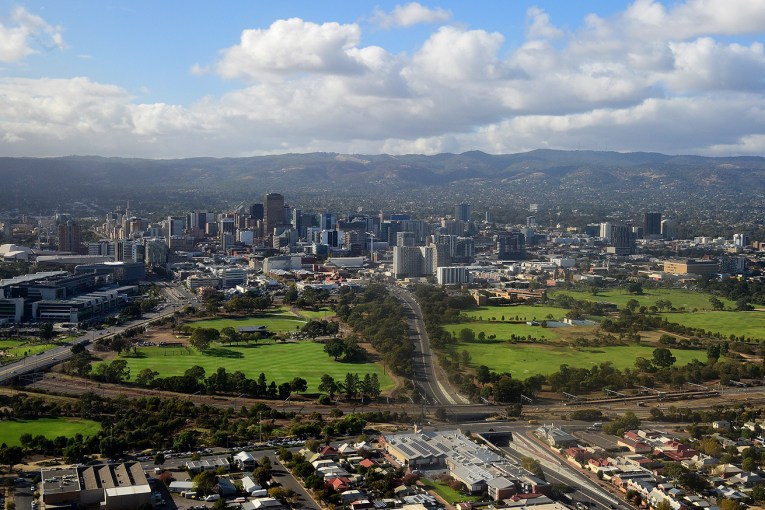Victorian economy could lose half of usual earnings under Australian Open changes


The Australian Open has hit another hurdle as organisers shore up quarantine rules for hundreds of players. Photo: TND
It’s feared Victoria’s usual economic gains from the Australian Open could be sliced in half if player quarantine issues force the tournament to be postponed.
The grand slam tournament, which according to Tennis Australia injected $387.7 million into state government coffers in 2020, was already reeling from the federal government’s ban on international travellers.
But “urgent” talks over whether hundreds of players would be allowed to train while quarantining has thrown its usual position on the Melbourne sporting calendar into disarray, with Nine newspapers reporting the tournament is likely to be rescheduled for February.
Tweet from @TennisChannel
Global Media & Sports managing director Colin Smith said delaying the tournament until late February or March would see the event clash with the Melbourne Formula 1 Grand Prix and the start of the AFL season.
And despite appearing as a potential sporting bonanza, Mr Smith told The New Daily that holding all those events at once would cannibalise their usual revenue – and their multiplier effects for the state economy.
That would represent a second year of impacted revenue for the Grand Prix, which was among the first Australian sporting events to be cancelled during Melbourne’s first virus outbreak in March.
“The Open, along with the Grand Prix, are the only international events of world standing held in Australia every year, so getting this scheduling right is really important,” he said.
“But you’ve got to overlay that with COVID, so the economic return to the state out of this [delay] could halve.”
Over the past decade, the Australian Open has contributed more than $2.71 billion in local economic benefits, according to Tennis Australia.
And last year alone, international and interstate visitors made bookings for 574,970 hotel bed nights and spent an average of $209 in the Melbourne economy per visitor, every day.
However, caps on spectator numbers – with Tennis Australia aiming for 25 per cent of its regular capacity – will have “significant ramifications” for hotels, restaurants and retail spending over January, Mr Smith said.
Players could always vote with their feet
But organisers have even bigger issues to consider, he said.
“It’s a big ask for top players to come Down Under, go through two weeks of quarantine and then head straight into playing matches and they may say this is a bridge too far, and we saw this with most of the Australians not competing in the US Open, for instance,” Mr Smith said.
“This is a very serious sport. If they believe their chances of maximising their performance will be adversely affected, then they most certainly could vote with their feet.”
Tweet from @jon_wertheim
The world’s top two men’s tennis players aired opposing views on the issue in recent days, with world No.1 Novak Djokovic urging the government to provide exemptions for players while in quarantine.
Djokovic, who tested positive for COVID-19 after hosting the Adria Tour exhibition events in June, hoped players would be allowed to compete in lead-up events in Melbourne and regional hubs.
“Having no official match before the Australian Open, before a grand slam, is a huge thing,” Djokovic told reporters at the ATP Finals.
However, French Open champion Rafael Nadal struck a conciliatory tone when asked about the Open on Sunday.
“We [are] nobody to say what they feel is better for [their] country, no?” Nadal said.
“We just need to be patient and accept the situation that we are facing. That is difficult for everyone. We need to be flexible to understand the situation and to find a way to play as many tournaments as possible next year.”
Australian Open tournament director Craig Tiley said the tournament would only occur in an environment that was “safe for all concerned”.
“We are working closely with the Victorian government on a plan that takes into account the needs of the players, fans, our partners and staff, and is of major benefit to the Victorian and Australian economy,” Mr Tiley said in a statement on Sunday.
Tweet from @9NewsSyd
UNSW economist Tim Harcourt told The New Daily he expected Victoria’s economy would bring in 30 to 40 per cent less money from the 2021 Australian Open than from previous years, noting that 13 per cent of visitors to the tournament in a non-pandemic year come from overseas and 26 per cent come from interstate.
But although the state’s bottom line could be greatly affected, Tennis Australia’s may be more immune, he said.
That’s because the largest proportion of their revenue is sourced from international contracts – with more than half of its revenue during the 2018 Open coming from sponsorship and media rights deals.
“Economically, all those deals are pretty much intact, even if the players are not playing in front of a full capacity crowd, but tournament organisers will be hit by lower gatekeepings,” Mr Harcourt said.








